
The advent of COVID-19 resulted in an unprecedented lockdown that kept getting extended and created an extraordinary situation. Businesses were impacted like never before. The level of impact could be gauged from the fact the Indian economy contracted by a quarter—its first negative growth since quarterly GDP data started getting published in 1996.
But despite the huge disruption, people and businesses had to carry on and life kept moving. Digital technologies have rightly been credited for making this happen. But not everything can be moved as bits. Food, essentials, medicines…they needed to be moved to sustain lives. With bits, atoms needed to be moved too.
While sectors like healthcare and pharma have been celebrated by common people for living up to the challenge, one industry that worked relentlessly in the background carrying the materials (the atoms) is logistics. Despite significant challenges, such as lockdown in many states, lack of manpower and manufacturing and retail getting impacted, the logistics industry had to operate for our lives to move on.
Interestingly, digitization itself came to the rescue. And those who had invested in it proactively worked more effectively and efficiently—by managing the lack of resources and extraordinary conditions really well.
One such story is that of mid-sized logistics company, SpotOn, which had not just automated significant parts of its operations, it had used advanced data analytics and Artificial Intelligence (AI) to optimize its operations, which came handy.
We explore the story in depth.
SpotOn Logistics is a mid-sized private equity backed B2B logistics company formed in 2012 after a buyout of Dutch logistics company, TNT’s India domestic road express business. Abhik Mitra, the CEO of SpotOn was part of the acquiring firm, India Equity Partners, and was the erstwhile India MD for the unit within TNT. The company’s estimated revenue is around INR 675 crores in FY 2019-20.
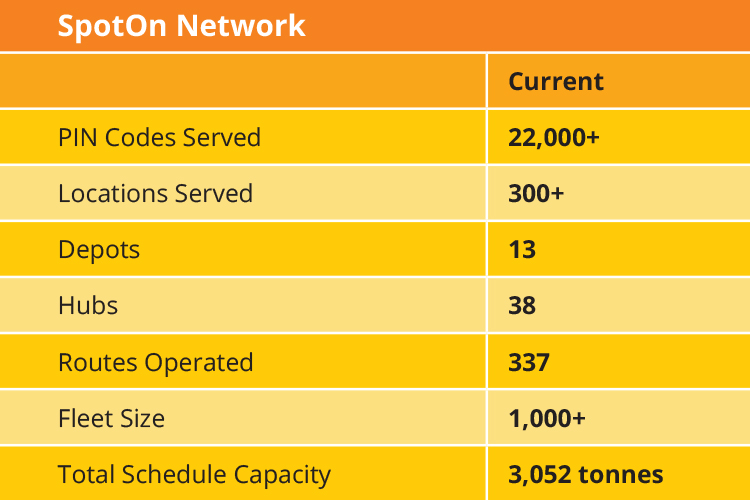
SpotOn Network
After acquisition, the new entity was called Startrek Logistics—it was renamed SpotOn Logistics four years later—with Mitra as its MD. Mitra was clear about one thing. To turn around the loss-making unit, he could not compete by being just another company, much smaller than the market leaders at that time.
Mitra was clear that the new company had to break some of the long-standing beliefs in the express logistics industry. And there was no doubt in his mind that the only way to achieve this was by leveraging data and using technology.
Even today, it is difficult to miss Mitra’s consistent reference to data and IT, while talking about any aspect of his business. One thing, however, is noteworthy for our readers: the clear distinction, not demarcation, between data and IT, in his mind.
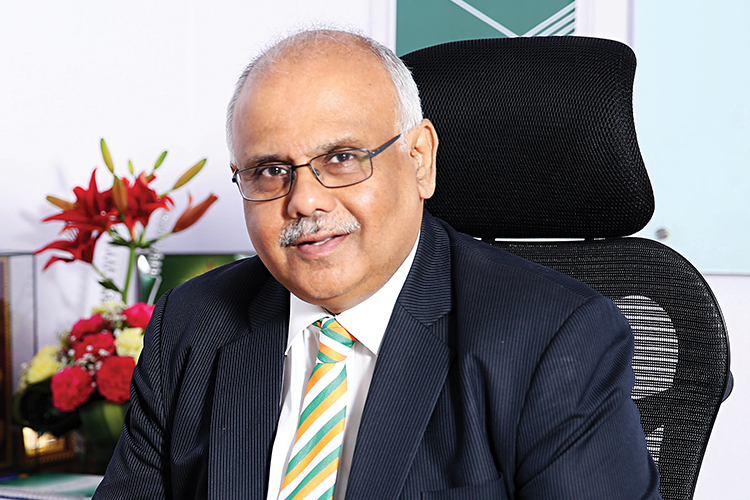
Abhik Mitra, CEO, SpotOn Logistics
“The way I see supporting business is in three buckets. There is engineering, there is classical IT piece and there is data. These are three pillars on which we run our business,” says Mitra, adding quickly that “no one out of these could be or should be separated from the other.”
After investment by Samara Capital, the company only accelerated its digitization journey.
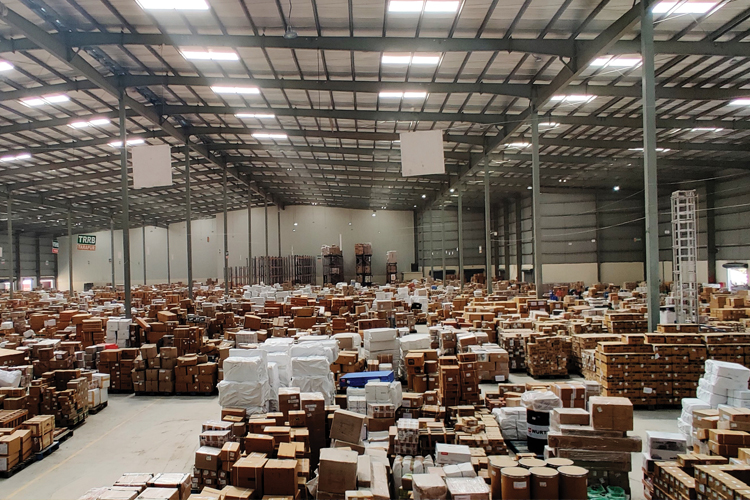
A SpotOn Logistics Warehouse
The Digital Foundation
Logistics companies globally have taken to technology for improving efficiency of their operations. Many Indian companies too have taken to digitization significantly.
Acknowledges Mitra, “There is some essential technology that companies like ours need for running the business. Not all of our competitors have that in place, but many have.”
“We want to deliver our goods on time and in perfect condition (no damage, no theft). This is the sole reason of our existence. Customers expect on-time consignment delivery. Consistency, predictability, reliability and information are all customers look for. From Day One, we have used technology to have control over all these parameters,” he says.
“From the time we pick up a consignment to we deliver a consignment, it is all done digitally,” says Mitra.
Pickups are either done through a web shipping tool, where the data is entered in the system automatically or through a tab with a Bluetooth printer. Each box has a label, which is scanned at every touch point in the network. Many logistics companies still use manual routing labels, though that is changing. SpotOn claims 100% digitalized pickup and delivery including booking.
But pickup and delivery are only the visible aspects of the entire chain. There is a big world in between. Every consignment passes through four more touch points – Origin Service Center, Origin Hub, Destination Hub and Destination Service Center. At every touch point, there is a scanning system in place to keep track of goods—when they arrive and leave. The scanning system at each touch point helps in keeping a track of them. Data at every touch point is essential as it gives information of vehicle arrival, departure, unloading and loading timings, etc. There are 38 hubs and 13 depots. SpotOn serves more than 22,000 PIN codes in more than 300 locations. That is a huge network itself. When at rest, any box is at any of these locations.
But for most of the time, a box is actually moving and somewhere on the road in a vehicle. SpotOn has 350 routes and a fleet size of more than 1,000. Collectively, the SpotOn boxes travel more than 200,000 kilometers a day.
Tracking every vehicle, every shipment from origin to destination is needed to have complete visibility. “Else, how will we manage to know if a truck is stuck or a consignment is lying somewhere?” asks Mitra.
So, the vehicles are on GPS and continuously tracked. A central management team monitors the data through GPS, thereby keeping track of any break-down of vehicles between two hubs. The data is available to the company in real-time which helps it inform the customer about the current status of delivery.
All these operational technologies, based on which SpotOn is built, are referred to as ‘basic’ technology’ by Mitra—though they may not be so basic for all his competitors.
What sets apart SpotOn is that when it started, it “consciously decided to compete with the biggies, leveraging technology,” to build differentiation.
Does that sound clichéd? Only if you forget the fact that SpotOn was not a greenfield startup funded by starry-eyed techies with backing from Silicon Valley venture capitalist.
It was an existing unit, of a large multinational with long legacy, which was making losses. It was easy to get distracted by the immediate metrics. But not only did SpotOn decide to use technology, the company ‘internalized’ it as a culture.
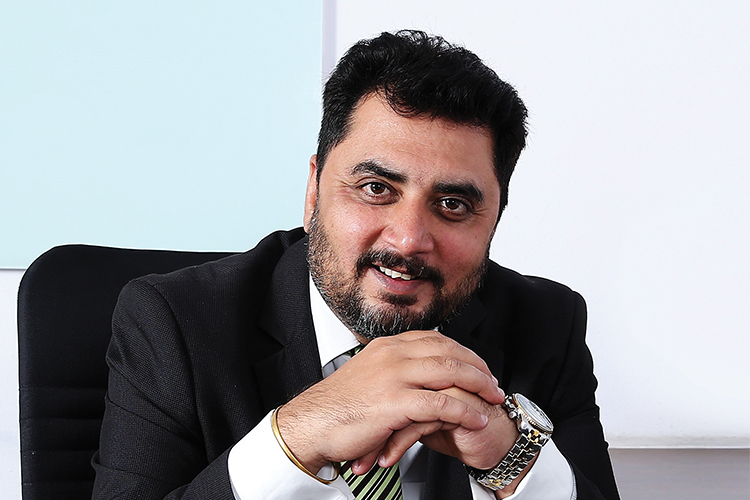
Uday Sharma, COO, SpotOn Logistics
“We have leveraged technology in all aspects - keep improving customer experience, enhance sales teams’ productivity, boost visibility, tracking and tracing of our consignments,” says Uday Sharma, in a matter-of-fact voice.
Unless you start talking to the heads of technology and engineering, you cannot be blamed for dismissing it as another regular claim by business executives these days.
SpotOn has built this technology brick by brick. While it uses SAP for financial accounting system and materials management, it has its own ERP, which is called e-SpotOn. Sales & Distribution functions from lead creation to prospect management to contract management and Operations functions from the customer logging in to the system to book till the final confirmation of delivery to the consignee, the entire chain is handled by e-SpotOn.
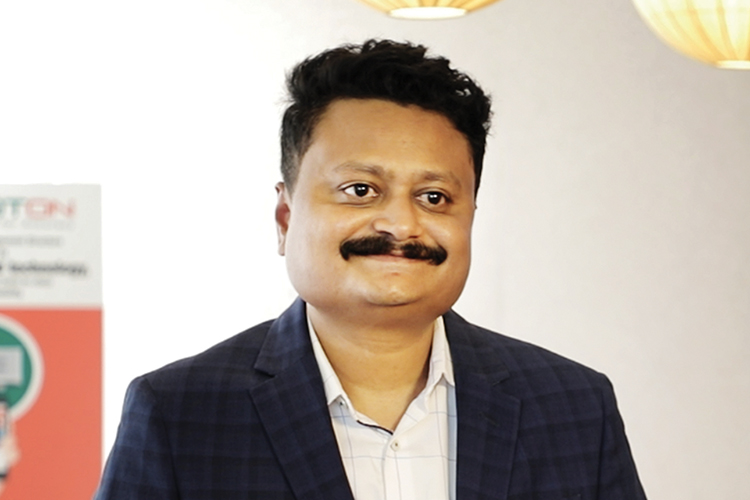
Rajesh Kapase, Director - IT, SpotOn Logistics
The company has also created a mobility platform, which has apps for operations, sales, employees, and the consumer mobile apps. It also has mobile apps for tracking each stage of the journey of the consignment. The company is largely on own infrastructure with in-house development team, informs Rajesh Kapase, Director - IT at SpotOn.
He says because of technology—and he claims its fairly unique in the industry—the company has information on not just the location but also the status of each vehicle, each box at any point of time. He should know as he has spent years in this industry.
All these help make the processes more efficient and pass on the advantages to the customer. But, in a highly competitive industry, that is not enough. The company should have much better understanding about its customers’ businesses. Every vertical has different requirements.
Says Sharma, “We manage various business verticals ranging from pharma, industrial and manufacturing, automobile, etc. So we have a holistic platform in place which helps us deliver differentiated service to different industry verticals.”
All this ‘customer delight’ and efficiency is achieved by what Mitra refers to as ‘classical IT’, what in Gartner’s definition of Bimodal IT, is the Mode 1 technology, the part that is focused on predictability, “exploiting what is known, while renovating the legacy environment into a state that is fit for a digital world.”
Much of the proactive differentiation happens in Mode 2 technology that is exploratory and proactive—something Gartner calls exploratory, experimenting to solve new problems and optimized for areas of uncertainty.
It is in this Mode 2 technology that SpotOn stands out.
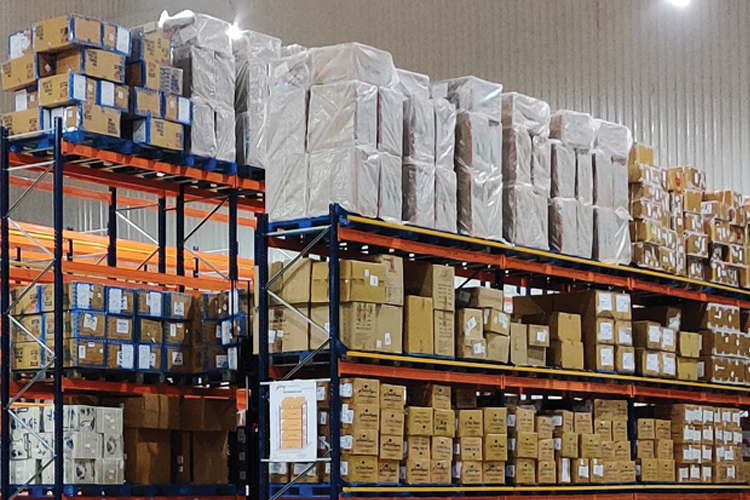
Another SpotOn Logistics Warehouse
SpotOn’s Mode 2 tech:
It’s spelt d-a-t-a
Beyond the business-as-usual technologies, there is a constant endeavor at SpotOn to improve leveraging technology through experimentations. Artificial Intelligence (AI) and Machine Learning (ML) are the go-to technologies for this part.

Satya Pal, AVP - Engineering, SpotOn Logistics
“Our agenda is defined in two ways, says Satya Pal, AVP - Engineering at SpotOn, who heads the business reengineering team, a small but highly focused team of about a dozen people consisting of data scientists, industrial engineers and business analysts works on both the inputs to create the solutions, that primarily works at achieving this.
“One, it comes from business operations—which are specific challenges or opportunities. Two, it also comes from the board as a strategic direction—a broad problem statement—which we break down to multiple smaller specifics for solving,” Pal explains.
As an example of the first one, take, for example, linehaul optimization. Linehaul is the lifeline of every logistics company. With 38 hubs, close to 350 routes, more than 750 vehicles, and a total schedule capacity of more than 3,000 tonnes per day, the operation is not just huge, it is complex too.
“How do I optimize my reach percentage at the lowest cost, for example,” says Mitra. “The number of variables is just too large for linear programming,” he adds. That is where AI came in handy.
The difference between traditional automation and these tasks is not in what they set out to achieve—but how and how accurately they do that. Typically, analytics value chain consists of four steps: descriptive (what happened, which most IT systems can easily tell), diagnostic (why something happened, which smarter IT systems these days can identify), predictive (how it is likely to happen, this is where AI comes in) and finally prescriptive (how to make the new things happen). For most operations, the last part is still done by humans.
SpotOn today does not just do diagnostic analytics but a lot of predictive analytics as well. Take service quality analysis. The data engineering team provides the visual analytics to the service team; identifies pain areas and the causes of pain and provides not just corrective but predictive inputs. The same applies in Sales’ Churn Analysis.
Most of these problem statements are inside-out. They originate from operations and after analytics goes back to operations. On the other hand, there are inputs that come from top. They are broader strategic directions, based on an outside change or a vision.
Says Pal, “Take the example of COVID. After COVID, how the scenario will change? Which industries are likely to see less demand, which are likely to see more demand, which locations are more impacted by the pandemic? All these have direct bearing on our operations—volumes and networks.” These inputs do not originate from the operations itself but has huge importance for operations.
However, some data scientists crunching numbers is not all that the reengineering team does. The industrial engineers actually hit the ground, talking to the vendors, getting the pilots designed, implementing the PoCs. The business analysts work on studying the process and the changes required. All those inputs go into engineering.
“Conventional logistics companies are still working on the law of averages,” says Pal. “The problem with that is that there is no granular analysis of data. So, when I talk to some of them, I know they struggle to understand, how, on an average day, we are achieving more than 76% of linehaul utilization with more than 83% of reach. It is very confusing to them. They assume it has to be a trade-off,” he adds.
SpotOn uses open source tools and Python to cut the data much more flexibly and faster, informs Pal. But it is what they achieve; not what they do. He is quick to point out that they do not do tech for the heck of it.
“There are the hyper-funded startups, which after round three funding, go on a hiring spree. They would hire a huge data science team; a huge team of developers; another huge team of industrial engineers. They do not just incur huge costs but they create complex structures, with lack of clarity. They start so many projects but drop many of them. As many as nine out of ten projects get dropped.,” Pal says.
SpotOn is conscious of that spiral and carefully selects the projects that actually matter the most, evaluating each project very carefully before taking up. For example, initially, the team had identified 34 use cases for AI and ML alone. Then, based on various parameters, such as how crucial it is to the business, the impact that it could create and the ease of doing it, they selected four or five of them. While others may be taken up later, the focus is on these selected use cases now.
“We have already closed one of the biggest items, the linehaul optimization, which we have solved with the use of reinforced learning. None of the companies globally that I know of have solved the linehaul problem using the reinforcement learning of AI,” says Pal. Reinforced learning is an advanced AI technique through which an algorithm is trained to give an output to improve.
“So, we are very lean, very objective. We quickly decide if it is a build or buy. And we close that,” he adds.
Core of this group is data engineering. There are multiple KPIs there—right from automation of reports to data analytics of company data, and image classification. It also builds models and forecasting.
Then, there are the functional optimization efforts, leveraging data and ML. It can happen in all parts of the business: network optimization, pickup and delivery optimization, optimization of infrastructure productivity, and even service quality optimization.
Visual analytics is being used to monitor what is good behavior and what is bad behavior by training algorithms to take the visual feed and analyzing them to arrive at the result. This helps in monitoring the operations.
While SpotOn does all these to create differentiations from its competitors—it is the fastest growing company in the segment—this tech-readiness came in handy when the huge disruption happened due to the pandemic, making logistics extremely challenging.
COVID and after
With COVID hitting, some of the technology-enabled facilities that were in place but were not being used fully by many clients started getting used. Some changes became a little less painful, unlike in many other companies. And of course, certain new solutions had to be put in place quickly.
SpotOn implemented a contactless PUD solution to minimize, if not eliminate, roughly 11,000 human touch points daily using technology, making it safer for all those involved.
Bills have a physical invoice and a physical hard copy that gets attached to it. For years, apart from the physical invoice and physical hard copy, SpotOn has been supplying e-invoice and e-Proof of Delivery (e-POD). Not all customers were open to that. During the pandemic, however, customers didn’t want hard copy invoice and hard copy POD. So, the company started giving mobile or e-call notes to avoid contact between the receiver and shipper. SpotOn has accelerated that in the post-COVID world.
“Now, customers have started buying which was difficult for us to sell them pre-COVID. The speed of adoption with regards to digital pick up was very good as during our pilot study, many customers responded positively in Bengaluru,” says Mitra.
All that safe operations apart, the reality is market was severely hit. The business had to be optimized to cater to that.
Many locations went under lockdown but there were shipments to those locations that had to be delivered. The idea was to see where to pick up, when and how much, so that you do not waste unproductive time by getting held up. When synchronizing pick-ups in different locations is done through proper data management, especially in terms of volume and time, route optimization or route modification can be done optimally. That is because lockdowns were being imposed in different states in different times, which the consignments had to move through.
“This could not have been done without proper data. If you want to do it manually, it is almost impossible to get it remotely correct,” says Mitra.
Except for a few small initiatives, it is not that the company did many things afresh. It just looked at the data through different lenses to get the operations right. In a way, the pandemic was one more huge variable that tested SpotOn’s system for resilience.
The company plans to keep its focus on technology going forward in all that it does. Last year, SpotOn acquired a third-party logistics company, RTS. Mitra is already looking what technologies could be helpful in optimizing and differentiating in that business. And blockchain is a serious idea in his mind.
But it is too early to get into those details. Wait and watch this space.

 In
In
Add new comment